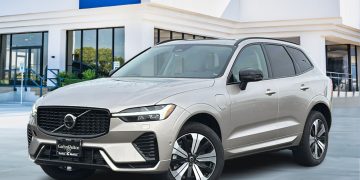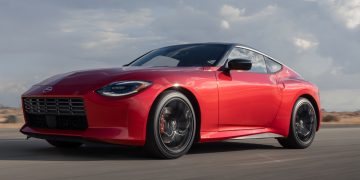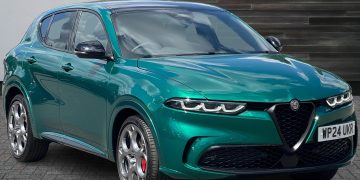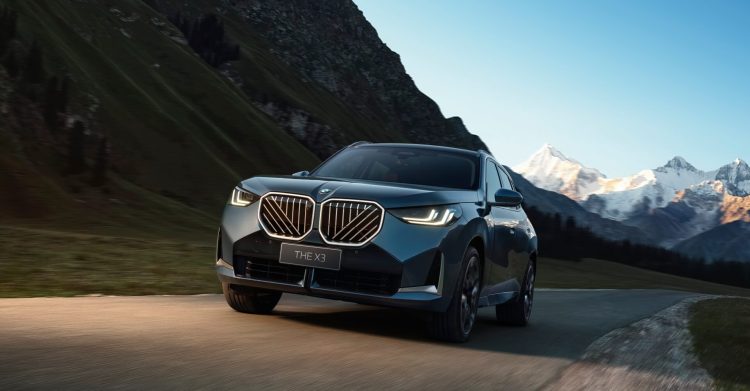In the world of automobiles, Mercedes-Benz, BMW, and Audi are often referred to as the “big three” luxury brands, a title they’ve earned through years of excellence in engineering, design, and brand perception. These three German manufacturers have established themselves as the pinnacle of automotive luxury, catering to customers who prioritize quality, performance, and prestige. But what exactly makes these brands stand out, and why are they considered the leaders in the luxury vehicle market? Let’s dive into the factors that have contributed to their dominance and the characteristics that set them apart from other luxury automakers.
1. Heritage and Legacy
The foundation of Mercedes-Benz, BMW, and Audi is rooted in over a century of automotive history, contributing greatly to their reputation as luxury powerhouses.
- Mercedes-Benz: Founded in 1926, Mercedes-Benz is one of the oldest car manufacturers in the world, known for its groundbreaking innovations and consistent commitment to luxury and safety. The brand has been responsible for introducing many world-firsts, including the first-ever automobile (the Benz Patent Motorwagen, 1886), the first production car with airbags, and innovations in autonomous driving technology. Mercedes-Benz has long been associated with refinement, comfort, and engineering precision.
- BMW: Bavarian Motor Works (BMW) was founded in 1916 and has a storied history tied to performance and innovation. Initially, the company produced aircraft engines, but after World War I, it turned to automobiles and motorcycles. BMW’s focus has always been on creating performance-oriented luxury vehicles with an emphasis on driving dynamics. The company’s slogan “The Ultimate Driving Machine” reflects its dedication to engineering cars that offer an unparalleled driving experience, with a focus on performance, precision handling, and luxury.
- Audi: Audi, founded in 1909, has a strong history of technological innovation and luxury. Audi’s name comes from the Latin translation of the founder’s surname, “August Horch,” which means “listen” in English. Audi is known for its technological leadership, especially in areas such as all-wheel drive (Quattro), advanced lighting technologies, and in-car infotainment systems. Audi’s design philosophy revolves around sophisticated and minimalist aesthetics combined with cutting-edge technology.
2. Superior Engineering and Innovation
A key reason why Mercedes-Benz, BMW, and Audi dominate the luxury market is their commitment to superior engineering and continuous innovation. These brands push the boundaries of what’s possible in the automotive industry, often introducing groundbreaking features that set new standards for luxury vehicles.
- Mercedes-Benz is known for its luxury, comfort, and safety innovations. Features like the AirMatic suspension system and PRE-SAFE safety system ensure a smooth ride and proactive safety measures. Their S-Class series, in particular, is often considered the gold standard for luxury sedans, incorporating the latest in comfort, technology, and design. Mercedes is also a leader in autonomous driving, with their Drive Pilot system representing the future of semi-autonomous driving.
- BMW focuses heavily on driving performance and handling. Its iconic M Series vehicles and xDrive all-wheel drive system offer a blend of dynamic handling and luxury. The i Series represents BMW’s push into the electric vehicle market, with the i4, iX, and the upcoming iX3 bringing cutting-edge electric technology to the luxury sector. Additionally, BMW has been pioneering in the integration of iDrive infotainment systems, making the driver experience more intuitive.
- Audi excels in technology and all-wheel drive systems. The introduction of Quattro all-wheel drive in the 1980s revolutionized the handling and safety of Audi’s vehicles, making them a favorite in challenging weather conditions. Audi’s Virtual Cockpit is another example of how the brand incorporates digital technology into the driver experience, replacing traditional gauges with a fully customizable digital display. Audi has also embraced electric vehicles, with their e-Tron line offering high-performance electric alternatives without compromising on luxury.
3. Design and Aesthetics
In addition to engineering, design is a defining factor in the success of Mercedes-Benz, BMW, and Audi. Each brand has a distinctive design language that reflects their values and caters to specific consumer preferences.
- Mercedes-Benz cars are often characterized by their elegance and luxury-oriented designs. The sleek, flowing lines of a Mercedes vehicle embody a sense of sophistication and high-class styling. The interiors are plush, with premium materials like leather, wood, and high-end metal finishes. The design philosophy focuses on comfort, offering an immersive, premium cabin experience.
- BMW vehicles, on the other hand, exude a sense of sportiness and performance in their design. The signature kidney grilles, sharp lines, and aggressive stance make BMWs instantly recognizable. The interiors are luxurious but with a focus on the driver’s experience. The driver’s seat is always designed to offer maximum engagement, and the overall cabin layout is crafted for ergonomic precision.
- Audi has a reputation for modernity and minimalism. The brand is known for its high-tech interiors, sleek designs, and clean lines. Audi’s focus is on creating a high-tech yet comfortable driving environment. The brand’s interiors are typically very clean and uncluttered, featuring minimalist designs with intuitive interfaces, such as the MMI infotainment system and virtual cockpit.

4. Brand Prestige and Market Perception
The perception of a brand plays a crucial role in its success, especially in the luxury automotive market. Mercedes-Benz, BMW, and Audi have spent decades building their brand image as symbols of status, wealth, and refinement.
- Mercedes-Benz is often associated with the luxury elite and is the preferred choice for business executives, heads of state, and celebrities. The brand’s history of producing royal vehicles and prestigious models, such as the S-Class, has cemented its place as a global symbol of luxury and success.
- BMW is often viewed as the go-to choice for those who prioritize driving pleasure without sacrificing luxury. The brand appeals to those who want a performance-oriented luxury car that still offers an upscale feel. BMW’s sporting image is further bolstered by its involvement in motorsports and its high-performance M models.
- Audi is seen as a technology-forward luxury brand, known for cutting-edge innovations and a more understated, minimalist approach to luxury. Audi has a loyal following among tech-savvy customers who appreciate the brand’s forward-thinking design and innovations in both performance and infotainment.
5. Global Presence and Diverse Lineup
Mercedes-Benz, BMW, and Audi have a global presence, selling vehicles across multiple continents and catering to a wide range of markets, from luxury sedans to high-performance sports cars, SUVs, and electric vehicles.
- Mercedes-Benz offers a wide variety of models, ranging from affordable luxury (the A-Class) to ultra-premium (the Maybach and S-Class). The brand has successfully expanded into the SUV market with models like the GLC and G-Class, and it’s aggressively moving into the electric vehicle market with its EQ Series.
- BMW provides a broad lineup that includes entry-level models like the 1 Series, as well as luxury sedans like the 7 Series and high-performance vehicles like the M5. The brand’s i Series electric vehicles represent its push into the future of mobility.
- Audi offers a similarly diverse range of vehicles, including the compact A3, luxury sedans like the A8, and performance-oriented cars like the S and RS models. The brand’s electric offerings, such as the e-Tron SUV and e-Tron GT, showcase its commitment to sustainability without compromising luxury.
6. Why They Are the “Big Three”
Mercedes-Benz, BMW, and Audi are often called the “big three” because of their unrivaled combination of luxury, performance, and innovation. They each have a unique appeal but share common characteristics that make them stand out from other luxury car brands:
- Long-standing legacy and innovation: All three brands have been in the business for over a century, constantly evolving with technology and design trends.
- Global recognition and prestige: They are universally recognized as symbols of success, quality, and refinement.
- Engineering excellence: Each brand is renowned for its advanced engineering and cutting-edge features, making them the benchmark for other luxury car manufacturers.
- Luxury and performance balance: They have perfected the balance between luxury, comfort, and high-performance, making them the ultimate choice for discerning drivers worldwide.
Conclusion
Mercedes-Benz, BMW, and Audi have earned their reputation as the “big three” luxury automotive brands by consistently pushing the boundaries of automotive excellence. Through their rich histories, cutting-edge technology, performance-driven engineering, and prestigious design, they have set the standard for luxury vehicles globally. Whether it’s for their superior driving dynamics, high-tech features, or unrivaled craftsmanship, these brands continue to shape the future of luxury automobiles and remain at the forefront of the automotive industry.


































Discussion about this post